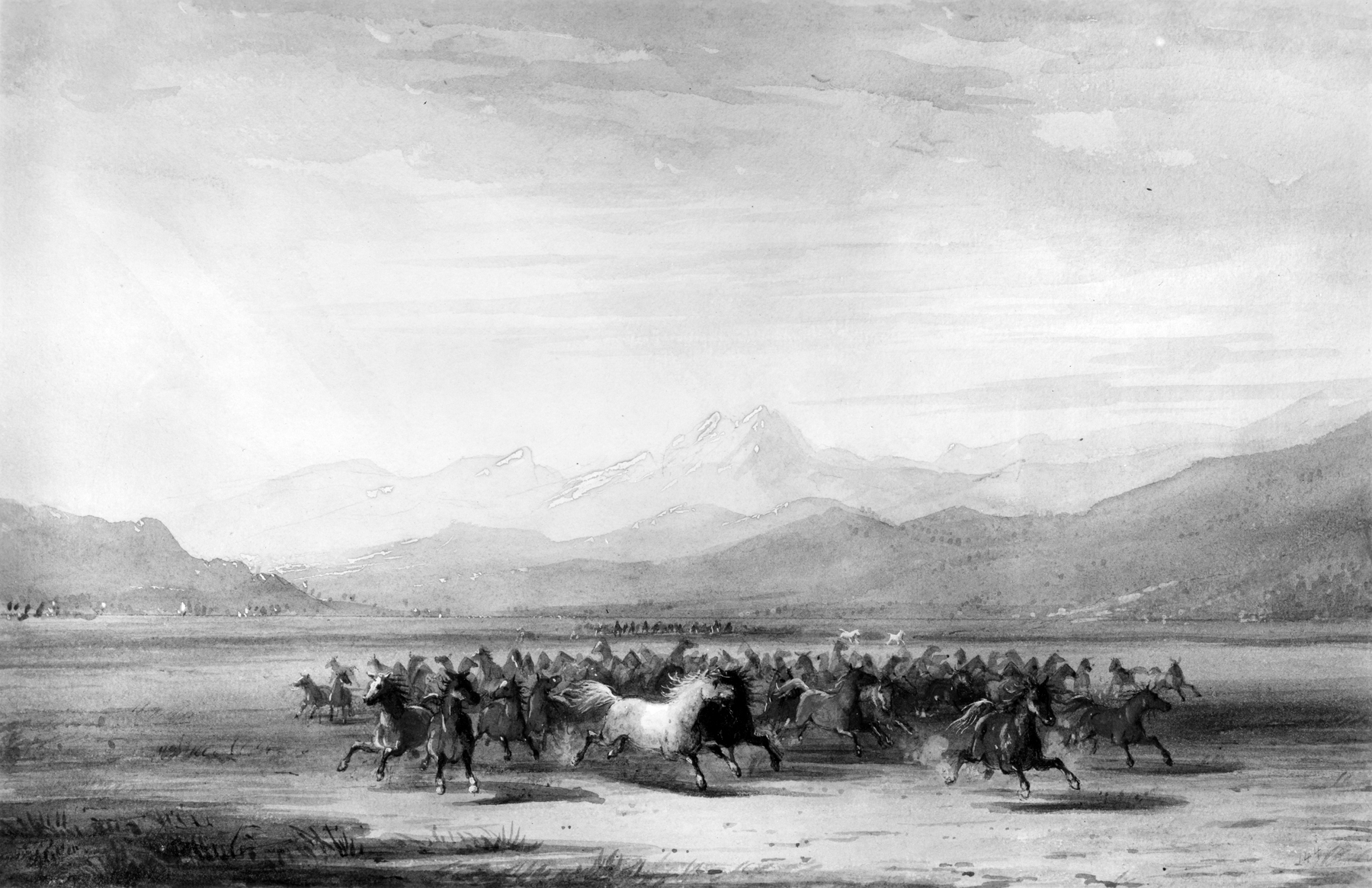Stampede of Wild Horses
(18th and 19th Centuries )
Extracts from Alfred Jacob Miller’s original text, which accompanied his images of Native Americans, are included below for reference.
"Among the wild animals of the West, none gave us so much pleasure, or caused such excitement, as the bands of wild horses that at intervals came under our view. The beauty and symmetry of their forms, their wild and spirited action,- long full sweeping manes and tails - variety of color, and fleetness of motion,- all combined to call forth admiration from the most stoical. One of the greatest difficulties we experienced was to get near enough. They fought shy and held us at a long range,- shewing that they were prudent and sensible, in addition to other fine qualities;- often we had to resort to a telescope. The wheel like trained columns of cavalry, charge, scatter, and form again;- again they are seen in battalions scampering across the prairie, stopping for a moment,- snuffing the breeze,- taking a final look at the intruders from the last undulation, and are gone. The sketch will convey to the observer some idea of this glorious scene,- but it is almost impossible to catch such magic convolutions and secure the spirit of such evanescent forms under the excitement and difficulties that may be readily imagined to transpire at the moment." A.J. Miller, extracted from "The West of Alfred Jacob Miller" (1837).
In July 1858 William T. Walters commissioned 200 watercolors at twelve dollars apiece from Baltimore born artist Alfred Jacob Miller. These paintings were each accompanied by a descriptive text, and were delivered in installments over the next twenty-one months and ultimately were bound in three albums. Transcriptions of field-sketches drawn during the 1837 expedition that Miller had undertaken to the annual fur-trader's rendezvous in the Green River Valley (in what is now western Wyoming), these watercolors are a unique record of the closing years of the western fur trade.
Provenance
Provenance (from the French provenir, 'to come from/forth') is the chronology of the ownership, custody, or location of a historical object. Learn more about provenance at the Walters.
William T. Walters, Baltimore, 1858-1860, by commission; Henry Walters, Baltimore, 1894, by inheritance; Walters Art Museum, 1931, by bequest.
Exhibitions
| 1983 | Indians of the Plains: The Watercolors of Alfred Jacob Miller. Frederic Remington Art Museum, Ogdensburg; Rockwell Museum of Western Art, Corning. |
Conservation
| Date | Description | Narrative |
|---|---|---|
| 4/1/1950 | Treatment | cleaned; mounted; re-housed |
| 4/1/1950 | Treatment | cleaned |
| 12/1/1982 | Loan Consideration | examined for loan |
| 4/18/1983 | Examination | examined for loan |
Geographies
USA (Place of Origin)
Measurements
H: 8 1/4 x W: 12 15/16 in. (21 x 32.9 cm)
Credit Line
Commissioned by William T. Walters, 1858-1860
Location in Museum
Not on view
Accession Number
In libraries, galleries, museums, and archives, an accession number is a unique identifier assigned to each object in the collection.
In libraries, galleries, museums, and archives, an accession number is a unique identifier assigned to each object in the collection.
37.1940.92







